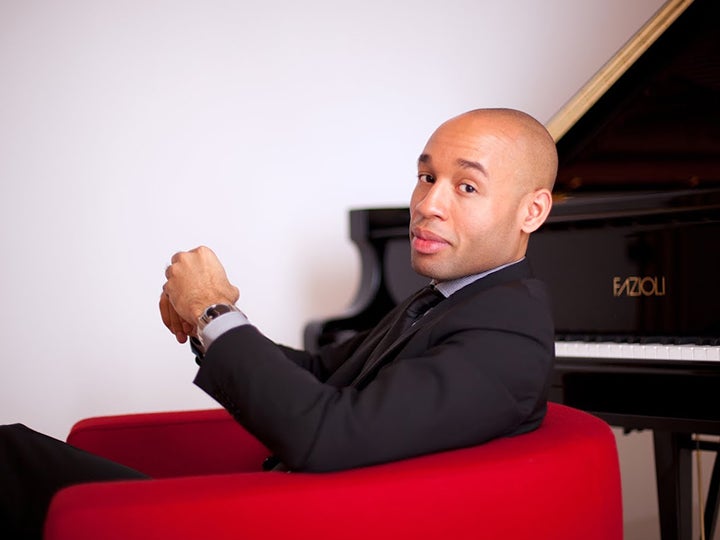The Influence of American Jazz
From November 29–December 2, the NJSO presents a fantastic concert featuring well-known masterpieces. What makes this concert unique is that three of these seemingly different works—and their composers—share almost the exact same influences and experiences, and they fall coincidentally close together in time and place.
Let’s start with Darius Milhaud’s arrival to America in 1922. Milhaud visited New York and finally heard the true sound of this “American jazz” that the musical world had been buzzing about. He traveled to Harlem, the heart of the jazz scene, where composers like Duke Ellington and George Gershwin were active. Witnessing the Harlem Renaissance firsthand had a profound effect on Milhaud. He included jazz elements into a piece he was composing, La création du monde (The Creation of the World). He completed the work, which would become his most famous, the next year. The use of jazz elements became a new trend being experimented with by Europeans.
In February 1924—less than a year after the completion of Milhaud’s La création du monde—George Gershwin composed Rhapsody in Blue. This work very famously presents a more explicit fusion of American jazz and classical music, this time written by an American. To this day, it remains the most famous orchestral example of this fusion. The melting pot of musical genres was still a sensitive procedure at this time, but it became a powerful tool in the future of music, with Milhaud, Gershwin and Stravinsky being among its strongest advocates.
A year later, in 1925, Stravinsky took the same pilgrimage to Harlem and heard American jazz in its birthplace. At this point in time, The Firebird was almost 15 years old, but Stravinsky’s curiosity brought him to the same place as Milhaud. They both had been a product of the Paris ballet scene, a leading force in musical modernism—American jazz was the natural next step. Like Milhaud, Stravinsky was exposed to Gershwin’s music, and it is likely that he heard other American legends like Duke Ellington, Louis Armstrong and Fats Waller. Stravinsky actually met and spent a lot of time with Gershwin, and they even played a bit of piano together. Stravinsky’s time in America inspired him enough to decree American jazz as “essential” to any serious composer as, he said, its widespread influence was “inescapable.”
When exposed to American jazz, all three composers unashamedly embraced it. They were already challenging European traditions before they absorbed the Harlem Renaissance, so jazz quickly became their next project. While each piece speaks for itself, to have them all on one concert is very insightful—one can literally connect the influences among each of the works!
Come see these beloved pieces live, and hear why what were once experimentations of modern music in the new century are now classic standards from the 20th century—with the NJSO, November 29–December 2.
Rhapsody in Blue & The Firebird
2018–19 Season
JOSHUA WEILERSTEIN conductor
AARON DIEHL piano
NEW JERSEY SYMPHONY ORCHESTRA
-
MILHAUD La création du monde
French composer Milhaud heard jazz in Harlem during a 1922 visit and brought the sound back to Paris for this lively ballet based on African folk mythology.
-
GERSHWIN Rhapsody in Blue
Gershwin called this iconic piece “a musical kaleidoscope of America, of our vast melting pot, of our national pep, of our blues, our metropolitan madness.”
-
PRICE Piano Concerto (NJSO Premiere)
Florence Price was the first African-American female composer to be performed by major orchestras; her lush concerto skillfully blends classical and popular styles. Read an article from The New Yorker on the “The Rediscovery of Florence Price: How an African-American composer’s works were saved from destruction.”
-
STRAVINSKY Suite from The Firebird (1919)
Lavish, vibrant, iconic; tells the tale of the Firebird, whose power is brilliantly illustrated by the thrilling score.
